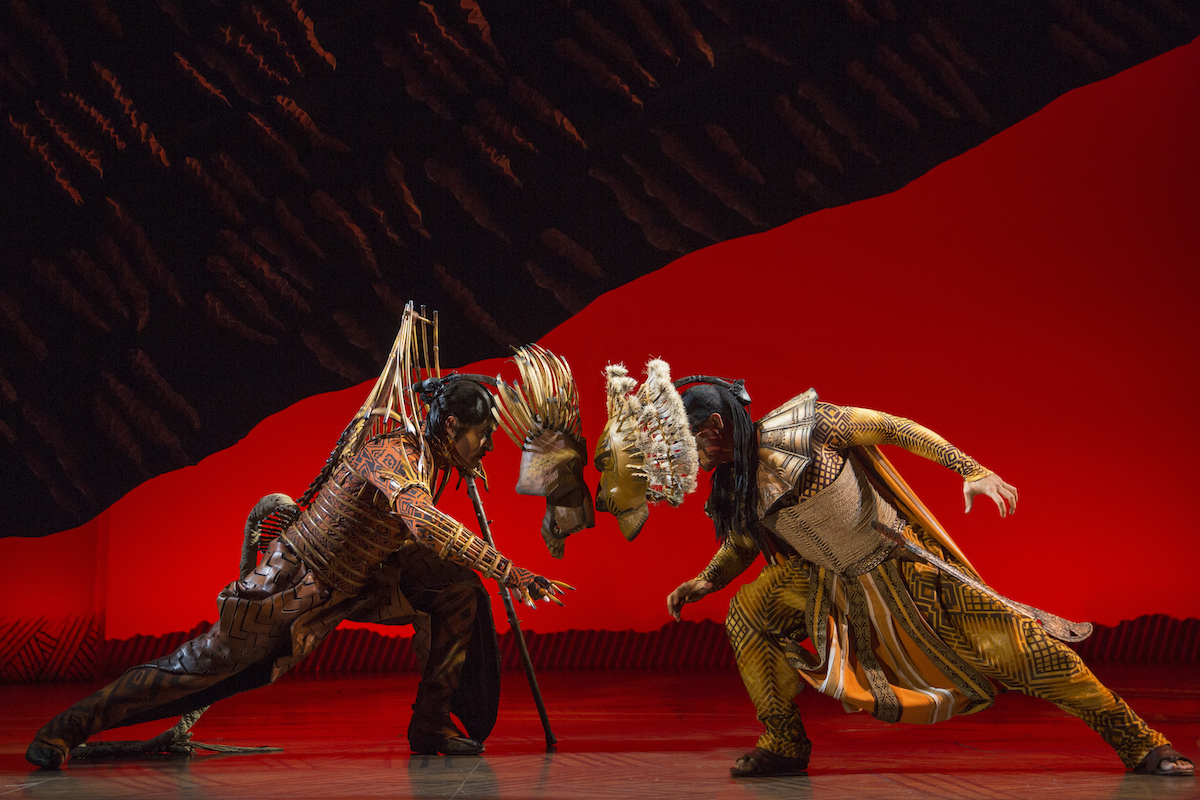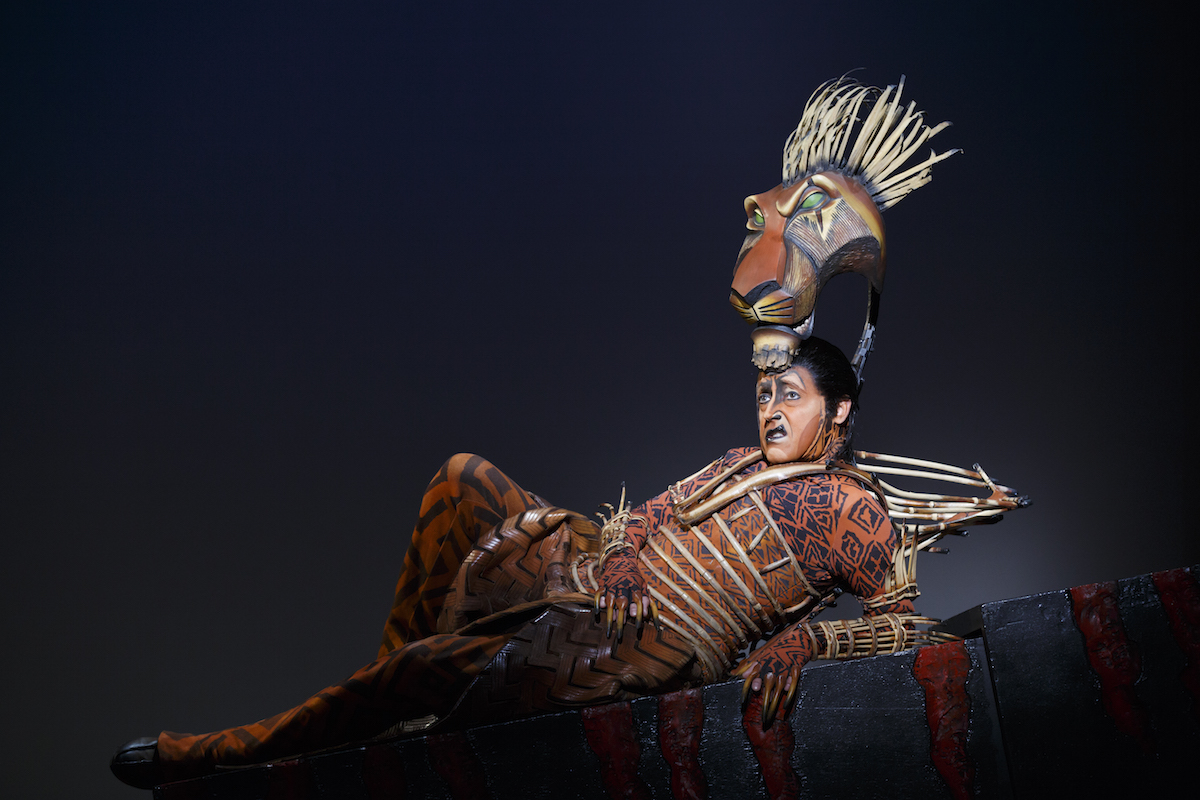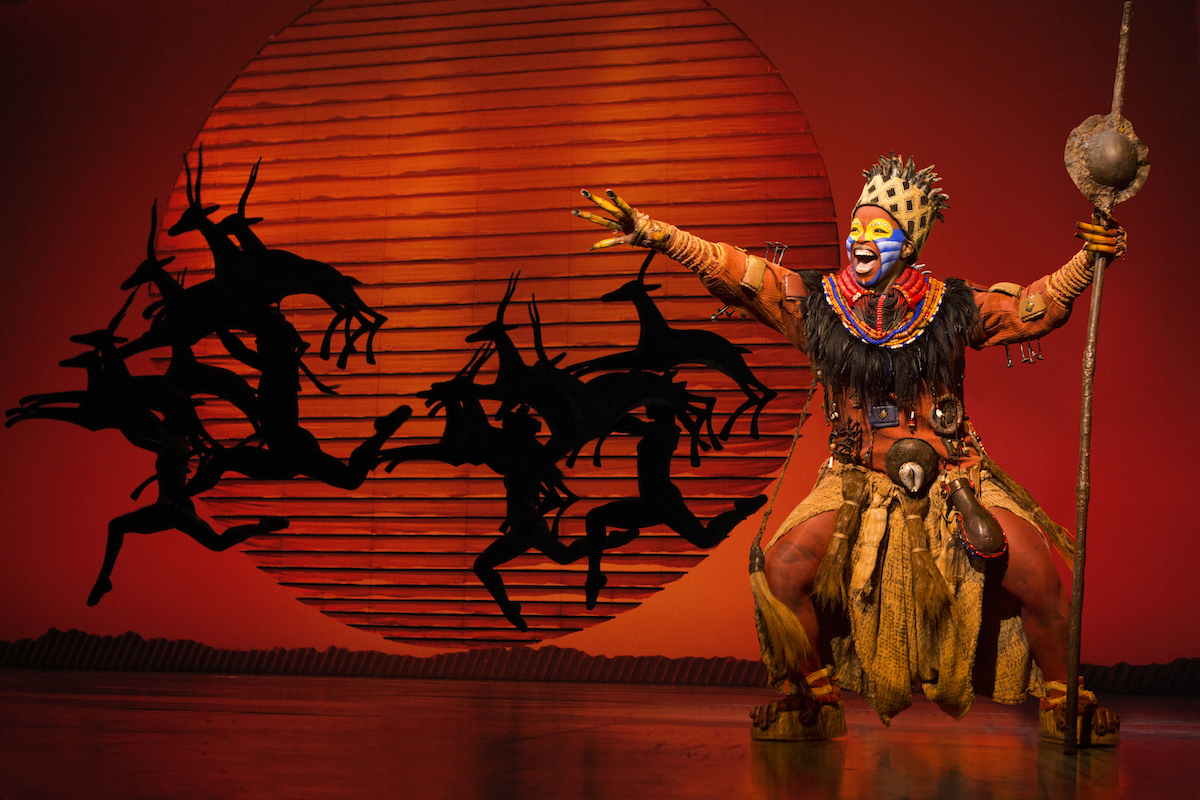The Lion King: The summit of Broadway puppetry
We talk with Sue McLaughlin, who’s one of those kind souls who repairs, cleans, and otherwise tends to the needs of the show’s famous puppets.

Gareth Saxe as “Scar” and Gerald Ramsey as “Mufasa” face off in The Lion King North American Tour. Copyright Disney. Photo by Matthew Murphy.
Update #1 — April 22, 2016; 10:34 AM
I’ve actually seen this show at Altria Theater now, and I can safely say that it rules. What else can one even mention about The Lion King?
Almost every single aspect of it is perfectly done–and that’s why it costs so much money to see. There’s so much detail, so much to look at, and so much innovative puppetry that keeps you wondering “Why? Why am I buying this weird human/puppet combination? Why does it work so well?” (see below article for answers!)
For fans of the movie–everything you want is there, only more so. A couple new songs, just as many jokes from the funny ones, and a whole new appreciation for an art form. Not that animation isn’t tough to do–but you don’t sit around wondering “HOW DID THEY DO THAT MUFASA IN THE SKY THING” when you’re watching the original film. They just drew it. You can draw anything. A live stage production is way more complicated.
The only odd parts are a seriously weird dance break during “Be Prepared.” Several open-shirted hyena dudes come out and twirl around a bit, and I couldn’t help think “Top Gun beach volleyball gratuitous pectoral muscle scene.” It didn’t fit, and it wasn’t cool enough to stand on its own.
Kids sometimes overact, and that’s fine. And I do wish adult Simba would spend a LITTLE more time hugging his dang mother who’s been grieving his “death” for several years, but you know. That’s my motherly side talking (son, if you run away and I think you’re dead and you come back, I better get a frigging warm embrace out of it.)
Otherwise, Rafiki, Nala, Scar, and Zazu are who you want to watch. Tickets start at $35. Get to buying!
— ∮∮∮ —
Original — April 07, 2016
When it debuted in 1997, the Broadway production of The Lion King expanded how we think of cinema. A cast that features no humans isn’t entirely new–you may have heard of Cats, after all. But this was something more intensive: lions, elephants, birds, giraffes, meerkats, warthogs, hyenas…basically every animal you can think of that has ever inhabited Africa.
Sue McLaughlin has worked on the puppets for the Broadway production of the Lion King for, well, longer than many of its fans have been alive. For 18 years, she’s constructed, repaired, cleaned, and basically been a zookeeper for a bunch of animals that aren’t quite alive–that is, they require a human as their final ingredient before springing to life.
“[Before the show was produced,] you really hadn’t seen puppetry and masks to this extent. Julie Taymor1 calls it a dual event–you can see the actor’s face as well as the puppet or the mask,” says Sue. “So although the mask is often stationary, you can see the actor’s face, and it imprints onto those of the animal.”

Patrick R. Brown as “Scar.” Photo by Matthew Murphy.
Man, does she love her job! Sue began as a performance major and realized quickly after getting out of college that she liked working a lot more than she liked auditioning. And when the original Lion King was being put together, “they weren’t really sure who was going to take care of the puppetry,” she explains. “Was it a prop? Was it wardrobe? So there was this arbitrary line drawn that said if the puppet was worn, it would be wardrobe. If it was carried, it would be a prop.” So Sue joined the wardrobe department to help out.
“It engages the audience member in a way that activates their imagination like nothing I’ve ever seen.”
If you’ve seen this show already, you know that very few of the puppets are simply carried around. Sue’s new job that she’d have to learn a whole lot about a great many puppets all at once.
“It’s really interesting to work on,” she says. “Because it engages the audience member in a way that activates their imagination like nothing I’ve ever seen.” We know in our brains that we are not looking at lion, but we start to suspend our disbelief and go with it. “There’s really truthful moments that come through.”
She learned on Scar, the uncle-villain–a puppet/character that now occupies a special place in her heart (I didn’t have the heart to tell her he is in fact an evil lion). But a lot of the other puppets also claim her affection.
Remember Zazu, Mufasa and then Simba’s trusted advisor? No? How about “ridiculous red-billed hornbill who provides much of the comic relief with his fussiness?” You’ve got it! Turns out that little guy is one of the most difficult puppets to learn in the show, due to him being entirely manipulated by hand. “Any of the other principal puppets are moved by some aspect of the actor’s body,” Sue explains. “Timon’s feet move because the actor moves his own feet, but in order to move Zazu’s eyes, his mouth, or his wings, you’ve got to do it all by hand.”
How do they get all those dang puppets around the country? In giant trucks, one of which the elephant takes up most of all by herself. “We travel with three work desks and several large cases that store masks, puppets, the motors that run the mechanicals for Mufasa and Scar…we have a lot,” she laughs. “And that’s just what sits in our shop, that’s not including the large puppets that are stored backstage.” That is, they’re so large they hang out back stage like a set piece.

Mukelisiwe Goba as “Rafiki” in The Lion King North American Tour. Copyright Disney. Photo by Matthew Murphy.
“The idea was a traveling puppet shop, so we can make repairs on the fly,” says Sue. Her team consists of three people who travel full-time, and they’re in the theater as early as anybody and are always there on-hand through the end of the show. “These puppets are worn eight times a week, and we maintain them eight times a week.” All of the principal characters are checked and cleaned, and the ensemble ones get maintained at least once a week, depending on how delicate they are. “There are definitely small repairs every day.”
The “grassheads,” for example, need constant maintenance. “Those are all little tiny strands of grass,” she says. “I wind up replacing and maintaining those once a week. I kind of treat it as a zen moment.”
I was curious about training the actors to work with such important and delicate puppets, surely more elaborate costumes than they’d ever dealt with before. Sue explained to me about “mirror time,” which many of the actors slash puppeteers end up doing for most of their day–staring at themselves in the mirror while manipulating a puppet that, once on stage, they won’t really be able to see. It all has to come down to muscle memory.
But all the work, sweat, tears, and replacing grass is worth it to Julie. After 18 years, she’s able to cheerfully say “It’s still so magical to me.”
You can check out the magic yourself with shows beginning at the Altria Theater on Tuesday, April 19th and running through Sunday, May 8th. Check out the full schedule and buy tickets online here. It’s really something that every single age can appreciate, and it’s something that should be done once in everyone’s lifetime.
- You’re gonna want to read her Wikipedia entry. It’s pretty amazing. ↩
-
Recommend this
on Facebook -

Report an error
-

Subscribe to our
Weekly Digest





There are no reader comments. Add yours.